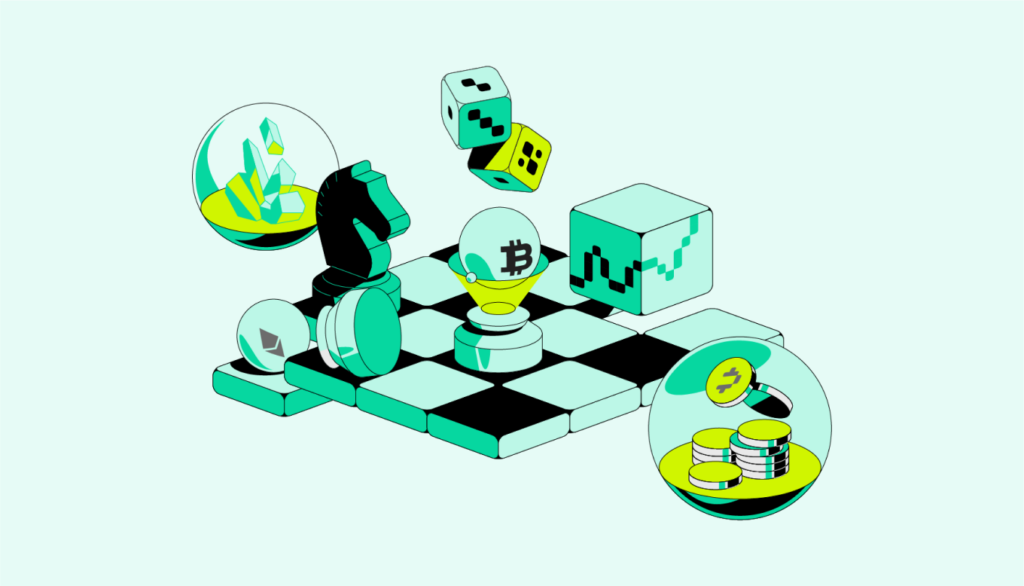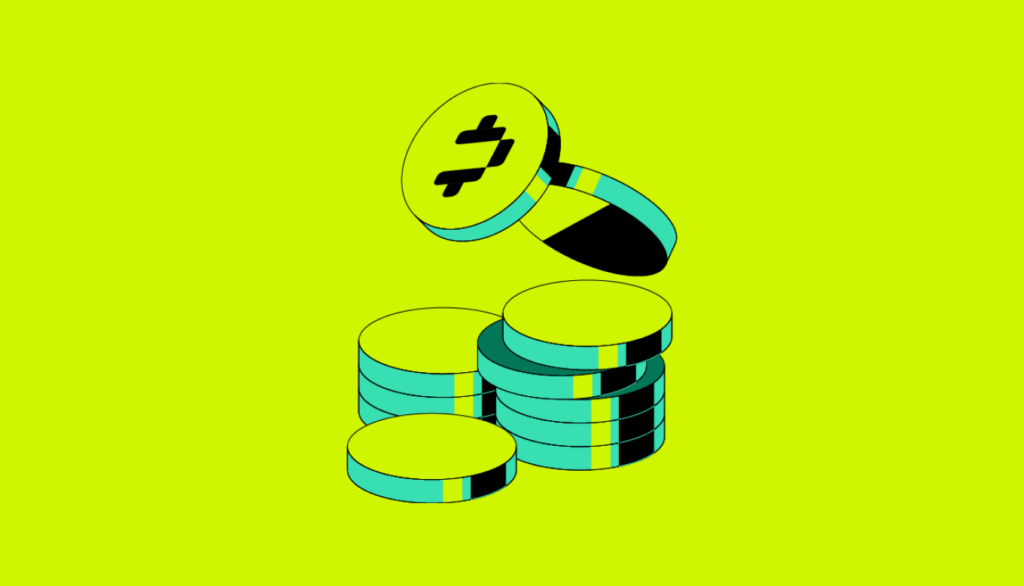Blockchain tech has disrupted and changed numerous industries by providing a decentralized, secure platform for transactions and data management. However, the successful operation of an on-chain network relies not only on the technology itself but also on efficient principles of governance.
In the context of blockchain, governance refers to the decision-making procedures, rules, and structures that dictate the functioning of an ecosystem. Simply put, it determines who has the authority, how decisions are made, and how conflicts are resolved within the network.
Blockchain governance allows networks to maintain decentralization as one of the core ideas of the technology, as well as to establish incentives, and create a collaboration-friendly environment. Based on the principles of governance found in various real-world social structures, such as governments or organizations, blockchain governance encompasses the elements of “rulers”, rules, and participants. These elements ensure smooth operation and ultimately the evolution of a given blockchain system.
The complexity of blockchain governance increases when multiple parties are involved, as seen in well-known public blockchain networks like Bitcoin or Ethereum. The decentralized nature of these networks introduces a higher level of governance risk, which requires robust decision-making mechanisms and structures.
Throughout this article, we will explore the different governance models and their practical implementations in blockchain networks. From centralized to decentralized models and on-chain to off-chain decision-making processes, we will analyze the implications of these models on network access, funding allocation, voting mechanisms, and other critical aspects of blockchain governance.
On-Chain Vs. Off-Chain Governance
Playing a vital role in the management of crypto projects, blockchain governance can be categorized into two types: on-chain governance and off-chain governance. Let’s explore the characteristics and implications of each type:
On-Chain Governance: Decentralized Decision Making on the Blockchain
On-chain governance refers to the decision-making process that occurs directly on the blockchain protocol itself. This governance type allows developers and node controllers to execute decisions and perform changes on-chain. In other words, through on-chain governance, relevant parties, such as developers as well as actual users, participate in code-based voting systems to shape the ecosystem structure.
One of the main advantages of on-chain governance is decentralization. By enabling distributed decision-making through node voting, it aims to prevent a single central authority from obtaining control over the blockchain. Each participant’s voting power is often determined by the number of coins they hold (native to the given blockchain network, so-called governance tokens), or NFTs for example, rather than following a “one-node-one-vote” principle.
You can see the examples of governance tokens on CoinMarketCap or Coingecko, listing the top governance coins by market capitalization.
If the design of a given blockchain ecosystem runs effectively, on-chain governance allows for fast decision-making. Proposed changes that were accepted through voting are incorporated into the network’s code, and developers are incentivized to vote promptly (e.g. they will receive a portion of tokens as a reward). This urgency can be particularly advantageous when time-sensitive updates or improvements are required.
When it comes to downsides of this model, it may face challenges such as low voter turnout or undemocratic voting dynamics. If certain nodes choose not to participate in the voting process, nodes with greater coin holdings could dominate decision-making, potentially undermining the original principles of decentralization. Thus, on-chain governance systems must carefully address these issues to prevent centralization and ensure the inclusion of diverse perspectives.
An infamous example highlighting the complexities of on-chain governance is the DAO hard fork of 2016. At the time, it was the biggest crowdfunding campaign in history, run on Ethereum blockchain and with an open-source code. A flawed voting system led to attack by hackers and significant losses of funds. With a goal to restore the stolen Ether coins, the blockchain was hard forked, but not everyone agreed with such a decision, ultimately splitting the network into two different blockchains – Ethereum and Ethereum Classic. This highlighted the need of designing robust, hack-proof governance mechanisms.
Off-Chain Governance: Incorporating Traditional Structures into Blockchain
Off-chain governance refers to decision-making activities that occur outside the blockchain. It involves discussions and decisions that are made in online forums, social media platforms, conferences, or other physical gatherings. While off-chain governance does not have direct voting power, it provides participants with spaces to exchange ideas and contribute to improving the blockchain network.
Off-chain governance often exhibits a higher level of centralization. Authority and decision-making power is usually held by community leaders, large associations of miners, or network developers. Based on existing regulatory and compliance mechanisms, these entities guide the future direction of the ecosystem.
The advantage of off-chain governance is that it resembles traditional governance structures that people are accustomed to. This model can reduce the potential for coding errors or data import mistakes, as decisions are made carefully and in detail before actually being executed on the blockchain. It also allows for a more expert-driven approach, with individuals possessing specialized knowledge playing the major role.
However, off-chain governance can be subject to transparency issues. Since decisions may be made behind closed doors, other important players in the network may question the validity and fairness of decisions. This even questions the core motivation behind blockchain’s development: removing central authorities and empowering the network participants.
Practical Applications and Examples
To illustrate practical applications of these governance models, let’s explore some prominent blockchain projects that have adopted either on-chain or off-chain governance, or a combination of both.
As mentioned above, off-chain governance is being practiced in well-established cryptocurrencies like Bitcoin and Ethereum. These networks rely on off-chain discussions and improvement proposal systems available on GitHub, such as Bitcoin Improvement Proposals (BIPs) and Ethereum Improvement Proposals (EIPs), to facilitate community decision-making. Besides not being flexible enough, the downside of this approach is its time consuming nature.
On the other hand, on-chain governance initiatives establish direct, democracy-style voting mechanisms within the blockchain protocol itself. The examples include EOS Network (implementing Delegated Proof of Stake consensus mechanism), Tezos, DFINITY, and Decentralized Autonomous Organizations (DAOs) – community-run platforms where users vote on and enforce the rules. For example, investors can engage in DAOs to pool funds with other users to invest collectively.
Implementing on-chain governance can be quite complex, requiring careful design and taking lessons from previous attempts. Other established governance models can serve as valuable references for accelerating the implementation process.
An example of mixed off-chain and on-chain governance is the private network called Hyperledger Fabric. While the rules are determined off-chain by the Hyperledger Foundation, users can develop protocols and tokens on this blockchain and specify their own on-chain governance models.
Governance Structures: Founder-Led Networks Vs. Consortiums
The nature of governance structures varies depending on the involvement of key parties and the initial founding of the network. Two common governance structures in blockchain networks are founder-led networks and consortiums.
Founder-Led Networks
In a founder-led network, a single company or founding member takes the initiative to start the network, and others join later. This structure allows the organization to maintain a leadership position and implement solutions for stakeholders already within their network. However, starting a founder-led network requires significant investment and resources. According to a study by the University of Cambridge that observed 67 blockchains, 71% were founded by a single company. The largest share of these networks belong to huge enterprises from banking, financial and insurance industries.
An example of a founder-led network is the Bitcoin blockchain, where the network was initiated by a single entity. More recent examples include blockchains developed by IBM or DTCC.
Consortium Networks
Consortium networks involve different industry players joining forces to achieve a common goal and leverage synergies. These networks allow flexibility, pooling of risk and ensuring the use of standardized processes by all members. However, consortia may face challenges related to intellectual property, liability, and non-performance of members. They fall into the middle ground between public and private networks.
Examples of consortia in the blockchain space include R3’s Corda (aimed to be used by institutions to automate business processes and manage digital assets), Enterprise Ethereum Alliance (EAA) that comprises multinational corporations and Fortune 100 companies, as well as above mentioned Hyperledger (in which Linux Corporation plays a major role).
The choice between founder-led networks and consortiums depends on blockchain’s purpose and mission, and various other factors such as the desired level of control, resource availability, and the need for collaboration with internal and external entities. Each governance structure has its own advantages and drawbacks, and organizations must carefully consider these factors when determining the most suitable approach for their blockchain network.
The Key Mechanisms of Blockchain Governance
On-chain governance operates through three primary mechanisms, which are as follows:
Consensus
On-chain governance relies on a direct, democratic voting mechanism within the protocol itself.
Decisions are made directly on the distributed ledger, enabling the implementation of blockchain changes and improvements.
Incentive
In order to create a fair environment for all participants, governance shifts from miners to developers and ultimately to blockchain users.
Users and developers have the ability to advocate for modifications that can significantly reduce transaction costs. Conversely, miners can advocate for upgrades that may increase block rewards.
Information
On-chain governance emphasizes transparency of information. Key advantages of on-chain governance include effective and decentralized decision-making through involvement of community members. The code is accessible to everyone, allowing for transparency in establishing consensus and making decisions.
On-chain governance helps avoid the occurrence of hard forks, which can happen when certain parties feel excluded from the decision-making process and fail to reach a consensus with other network organizations.
Voting in on-chain governance is performed through tokens, and incentives are provided to encourage user participation in the voting process.
Interaction of Governance System with Blockchain Architecture
Blockchain governance is closely intertwined with the various elements of the blockchain architecture. The governance system must account for and interact with each blockchain layer to ensure effective functioning:
Internet Layer. The bottom layer that provides the foundation for blockchain technology to operate. The governance is influenced by the protocols and rules related to internet connectivity and data transmission. Equal treatment of all network traffic is crucial for keeping blockchain networks decentralized.
Data Layer. Internet service providers and governments are able to analyze data packets, potentially compromising privacy and enabling discriminatory practices. Such practices can affect the fair and transparent operation of blockchain networks. Blockchain governance must address these implications and implement measures to ensure data privacy.
Consensus Layer. The blockchain implements governance rules through consensus protocols. Consensus algorithms determine how nodes interact and validate transactions within the network. The choice of consensus algorithms and protocols plays a significant role in the governance of the blockchain network. The governance system must align with these rules to ensure security, scalability, and trustworthiness.
The App Layer. This layer consists of decentralized applications (dApps) that interact with the blockchain network. The governance of dApps depends on the protocols defined by their creators. Blockchain governance must consider these protocols and support the smooth operation of dApps while maintaining decentralization and security.
The Wrap Up
We hope this article has provided clarity on the concept of blockchain governance. As you are currently exploring these pages, it is likely that you are associated with the investment or startup industry.
In that regard, you may find this interesting: Unique.vc is an example of an investing and fundraising platform that incorporates blockchain governance. It enables investment leads to coordinate with coinvestors, assigning them distinct roles and voting powers to optimize the investment process. On the other hand, startup founders can raise funds while presenting proposals that allow investors to vote on crucial decisions regarding the startup’s milestones and progress. We encourage you to explore Unique.vc at your convenience!



